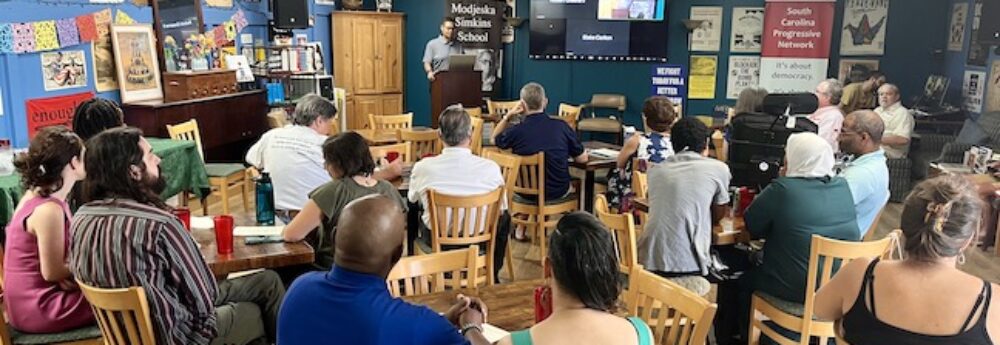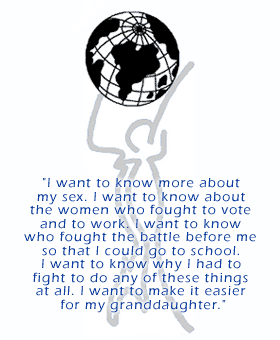By Kendall Anderson
Minnesota Women’s Press
Founded in the late ’60s, the academic discipline of women’s studies has now expanded to include gender and sexuality studies as well as racism, environmental equity and peace studies. With all these changes … is women’s studies still relevant?
Boy have we come a long way baby (and girl do we have a long way to go).
That’s what many scholars and graduates think about women’s studies, the multidisciplinary field that sprang from the women’s movement of the 1960s. Founded and nurtured amid social activism and rampant gender discrimination in the late 1960s, women’s studies programs are now offered at more than 700 U.S. colleges and universities. The discipline’s success has also brought challenges, among them the everlasting question of relevance. There is a lack of knowledge among some students about the discipline, scholars say.
“Female students today have so many opportunities: Their mothers work, they’ve seen female senators and maybe, soon, a female president, so they think the women’s movement is done,” said Prof. Joanne Cavallaro, chair of women’s studies at the College of St. Catherine. She pointed out that though white middle-class American women have more opportunities, “If you look at the statistics around the world on women, that’s obviously not true.”
Nearly four decades after it was founded, women’s studies is undergoing a kind of redefinition, said Jacquelyn N. Zita, an associate professor in women’s studies and former department chair at the University of Minnesota. Along with proving the field’s relevance to students who sometimes lack historical perspective, Zita and others work to keep society at large educated about what a feminist lens can bring to our complex issues of the day. Both goals must be accomplished at the same time women’s studies leaders protect their programs and grow their historically low funding in an increasingly competitive academic world.
From the Streets to the Ivory Tower
Women’s studies departments grew out of the largely Caucasian women’s liberation movement of the 1960s and ’70s. The first women’s studies classes were taught in the late 1960s, after the passage of the Civil Rights Act, which banned discrimination in education, employment, housing, government contracts and public facilities. Second-wave feminists were ignited by the civil rights issues of their decade, just as first-wave feminists had been motivated by the abolitionist movement and women’s suffrage issues of the 19th century.
Today’s women’s studies departments often include “gender studies” or “sexuality studies” as well. The 1970s brought the discipline into being, the 1980s followed with an explosion of research, and the 1990s through today has been a time of casting a wider net. Just as second-wave feminism changed the universal assumption of male as the norm, third-wave feminism and today’s women’s and gender studies departments are challenging the idea that white, middle-class females are the norm.
The discipline has exploded to include gender and sexuality studies as well as racism, environmental equity and peace studies.
“The expansion across the country is really a deepening and a maturation of the field without losing the radical edge,” Zita said. “The focus has been taken away from women’s liberation as the defining metaphor.”
That is demonstrated by the diversity of offerings. Working Class Women’s Cultures, Engendering Whiteness, Chicana Feminisms, and Gay, Lesbian, Bisexual, and Transgender Social Movements in the U.S. are some popular women’s studies courses at the University of Minnesota. At Minneapolis Community and Technical College, Women, Ecofeminism and Development is among the most popular courses.
Low Funding, High Relevance
The broader and more global focus of today’s women’s studies has made the discipline acutely relevant in society, one scholar said.
“As society has embraced these concepts of equality, civil rights and social justice, more students understand the value of learning a broad perspective on the issues,” said Kristin Mapel-Bloomberg, associate professor and director of women’s studies at Hamline University. “Women’s studies graduates are able to help organizations grapple with today’s issues of justice and equality and where gender intersects with race and culture. They take courses you might not get with a straight business degree.”
Women’s studies graduates at Hamline and other local schools have gone on to leadership positions in the executive leadership ranks of both for-profit and nonprofit organizations as well as to launch their own companies, travel the world doing social justice work and write.
The discipline is uniquely qualified to respond to issues of economic and racial inequities, human rights violations and other injustices, Zita said.
“We’re preoccupied with accumulating things,” she noted. “And there is an aggressive ignorance we’ve all absorbed about what’s happening to us with the environment. We’re just beginning to understand the enormous trauma; but the problem is, we’re not aware of it. That’s an educational problem.” Violence against women-murders of women by spouses or boyfriends have become almost routine headlines-along with gender discrimination lawsuits at large U.S. companies such as Wal-Mart, show the ongoing need for a feminist perspective.
“We still get these spectacular things, like the Anita Hill case,” said Zita. “We still have no good public rhetorical space to discuss incest, rape and sexual harassment.”
Christina McElderry, a 2001 College of St. Catherine graduate with a triple major in women’s studies, sociology and urban policy, said she views-and responds to-issues of power, privilege and justice differently because of her women’s studies education.
“Women’s studies … allows, on some level, a way to ‘step back’ … from situations and evaluate them in a way that dominant discourses elude,” said McElderry, now a graduate student in political theory and international politics. “It changed the way I see, think about, and act in the world. … I think we need people in all disciplines trying to think about our world differently.”
Women’s vs. Gender Studies Debate
The inclusion of gender identity studies in women’s studies departments over the last decade has been controversial. Some say it’s a natural step, since gender and sexuality identities are different from women’s issues. Many colleges have expanded the discipline to appeal to men; a number of scholars worry that the unique needs of women may be short-changed if the women’s studies curriculum gets watered down.
“I have a problem with changing the name of a discipline to attract more men,” Mapel-Bloomberg said. “Yet women are so socialized in caretaking men, even to the point of undermining their academics…. There is a lot of good work to be done by allowing women to have their own space in which to talk, discuss and theorize.”
Zita said there is room for both areas, with care. “It’s always a danger-it requires a program to be vigilant about whether it’s an erasure of the needs of women,” she said. “But it’s just not exclusively [women’s studies] anymore.”
Third-Wave Feminists
Professors see many students today who lack an understanding of feminist history and are not trained to think critically or theoretically. Sometimes students lack urgency and passion.
Yet they are hopeful, too.
“Students are not as militant or socially engaged but they are hungry,” Zita said.
Mary Pruitt, who co-founded Minneapolis Community and Technical College’s (MCTC) women’s studies program 34 years ago, sees new energy in our area’s burgeoning immigrant population. “The new immigrants from all over the world have stimulated us to look at a wider global view,” Pruitt said.
African refugees have brought renewed interest in issues of global oppression and poverty to MCTC’s classes, she said; Hispanic immigrants as well as those from other parts of the world share their own unique stories that enrich the classroom discussions on gender roles, power, environment and more.
Parting Thoughts
An old saw often lobbed at women’s studies is that feminist scholars are male bashers. In fact, women’s studies helps men, some note. McElderry considers it “unfortunate that women’s studies [are considered] specific [only] to women,” noting that men, too, can be the victims of a dominant culture which “essentially coerce[s] [them] into hyper-masculine performances and identities. … The importance of women’s studies is that it calls these cultures and performances into question, and asks us to think through them in new ways.”
Sharon Ramirez, a St. Olaf graduate with a women’s studies concentration who has been successfully self-employed as an organizational consultant for more than a decade, said she’d like the discipline to be more widely explored through the context of family and society. “There is still discrimination in the workplace, policymakers are still trying to limit reproductive choice and there are still lots of policymakers doing all they can to erode conditions for women and families,” said Ramirez, 47, who has also worked as a public policy researcher and advocate in housing and domestic violence.
Keeping women’s and gender identity studies relevant-and funded-is behind the National Women’s Studies Association’s recently commissioned survey of the discipline, which will be completed within the next two years.
Until then, scholars like Zita say they’ll keep teaching women’s studies to hungry students.
“The work of education is to go deeper and figure out how things are interconnected. How does power and capital work and how does that look globally?” Zita asked. “In our little department, we’re trying to bring those lenses into use.”

